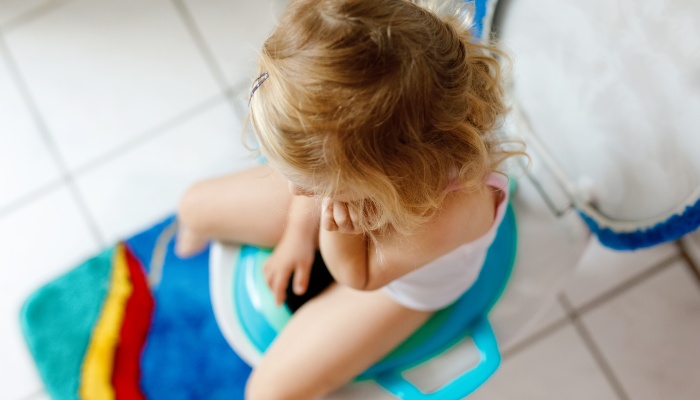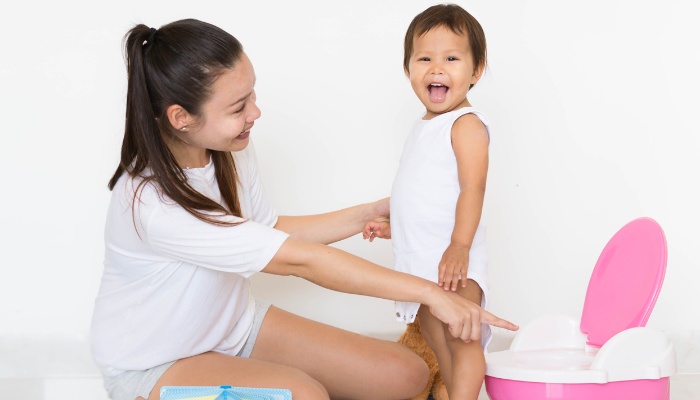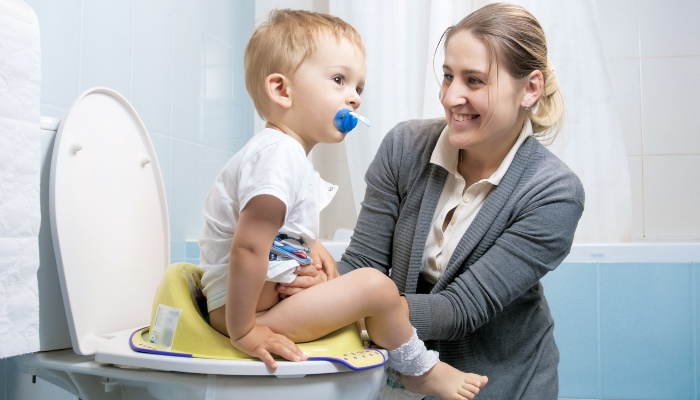Potty training is an important stage in a child’s growth and a moment that parents eagerly anticipate during the early years of their child’s life. Let’s be real, no one enjoys having to change dirty diapers!
Both parents and companies are getting more and more creative when it comes to innovative solutions to ease the potty training process. Recently, potty training watches have emerged as a popular tool.
Are they just another silly gadget that should stay on the shelf or are they worth trying?
There can be several benefits to potty training watches such as establishing routine and reminders, encouraging independence, reinforcing positive behavior, and giving parents peace of mind. However, they might not work for every child.
In this article, we will delve into the question of whether potty training watches are worth investing in and explore how they work.
Potty Training Watches – What To Know
Potty training watches aim to assist parents and children during the potty training journey.
Basically, they are kid-friendly watches that can be programmed to give your child a reminder, such as lights, music, or vibrations, when it is time to go to the bathroom.
Do Potty Training Watches Work?
The answer to this question is obviously subjective since every child is different!
However, many families are finding success with potty training watches and are noticing that it makes the transition more exciting for their child.
Advantages of Using a Potty Training Watch
Benefits of using this simple device include:
1. Establishes Routine and Reminders
Potty training watches help to establish a consistent routine for children. By setting regular intervals for bathroom breaks, these watches provide gentle reminders for children to use the toilet.
They assist children in developing a habit and awareness of their bodily functions, which is essential for successful potty training.
2. Encourages Independence
While potty training, many children despise the constant nagging of their parents to use the bathroom.
Potty training watches can give your child a feeling of empowerment by giving them a sense of control over their bathroom habits. It becomes sort of like a game to them!
As children become familiar with the watch’s reminders, they will gradually take charge of their potty routine and reduce their reliance on their parents to remind them to use the toilet.
3. Reinforces Positive Behavior
Potty training watches often incorporate positive reinforcement techniques. Some models feature animated characters or music that reward children when they successfully use the toilet.
These positive stimuli create a fun environment, which motivates children to repeat the desired behavior.
4. Parental Peace of Mind
The use of watches can help alleviate some of the stress and anxieties parents may face during the training process.
With the watch acting as a reminder, parents can focus on other tasks, knowing that their child will be prompted to use the bathroom at regular intervals.
Disadvantages of Using a Potty Training Watch
While these new gadgets can be helpful tools in the potty training process, there are also some potential disadvantages to consider:
1. False Alarms
Because the watches are designed to remind the child to use the bathroom after certain time intervals, it may lead to frequent false alarms where the child is prompted to go to the bathroom even when they don’t actually need to.
This can create confusion and disrupt the natural learning process.
2. Dependency on the Watch
Relying too heavily on the watch can result in your child becoming too dependent on the reminder rather than developing their own internal cues for when they need to use the toilet.
3. Limited Customization
Potty training watches typically come with preset timer intervals that may not align with your child’s specific needs. Every child is different, and their bathroom habits can vary.
4. Inconsistent Results
While these watches can be extremely effective for some children, they may not work as well for others.
Each child learns at their own pace, and a watch alone may not be enough to teach them the necessary skills for successful potty training.
5. Boredom
Kids tend to get bored quickly, so the novelty of the cool watch may wear off. The excitement can soon fade away, and you’ll be right back where you started.
6. Cost
While there are cheaper options, some models tend to be rather expensive. It may not be worth spending money on a “luxury item” that might only be in use for a few days.

Potty Training Watch Age Range
Many experienced moms agree that the watches are more effective for children that are two years of age or older.
Potty Training Watch Timer Settings
All potty training watches are slightly different and may have different timer settings; however, they will all allow you to set a timer for different time intervals.
The Original Potty Watch has timer settings for 30, 60, and 90 minutes.
Best Potty Training Watch
There are several different makes, models, and brands of potty training watches.
Some are more expensive than others and have different features, but they all aim to achieve the same purpose. Here are a few options to accommodate various preferences and budgets:
The Original Potty Watch
This is where it all started! This watch has preset timers for 30, 60, and 90 minutes. When the timer goes off, flashing lights and fun tunes remind your child that it is time to try and go potty.
SKYROKU Potty Training Timer Watch
This watch does everything the Original Potty Watch does, and it’s slightly cheaper! It has great reviews and is a bit more stylish with different color options.
Pottywin Potty Training Watch
Don’t let the simple design fool you! This watch can still do just what the others do at nearly half the price.
Rewards for Potty Training
One effective way to motivate and reinforce positive behavior during the potty training journey is by implementing a reward system. Reward systems can look different for every family.
Some parents may prefer to do a sticker chart and reward their children when they reach a long-term goal of using the potty 10 times, for example.
Other families may prefer to reward their children every time they successfully use the toilet.
One downside to this method is that children may begin to expect a reward every time they use the bathroom, which can be tough to break.
However, it ultimately comes down to what is best for your child and what helps them learn to use the toilet appropriately and control their bathroom habits.

The key to potty training is to make the experience fun and engaging for your child.
Here are a few ideas of different creative rewards systems that you could consider implementing in your journey:
- Sticker chart: A colorful chart that your child can decorate with stickers each time they use the potty can be a fun and effective idea. After a certain number of stickers are earned, they can receive a larger reward, such as a new toy or a special outing.
- Treasure box: Fill a box with small toys, trinkets, or treats that your child finds exciting. Whenever they achieve a potty training milestone, they get to choose something from the treasure box as a reward!
- Potty party: Do something fun every time your child goes to the potty! Sing songs, dance, or do something they enjoy doing to make bathroom trips more fun.
- Progress jar: Get a small clear jar and a bag of marbles, jelly beans, pom poms, etc. Each time your child successfully uses the potty, they get to add one to the jar. Once the jar is full, they can trade it in for a larger reward or special outing.
When it comes to any type of reward system, however, you have to consider when it will need to be discontinued.
While the timeline may vary for each child, when you see signs of consistency and independence, sustained success, and self-motivation, it is probably time to gradually transition away from the reward system.
Related Questions:
What Is the Best Age for Potty Training?
When trying to decide when to potty train your child, you should focus more on readiness signs rather than their age.
While many toddlers begin to show readiness signs between the age of 2 and 3, every child is different.
Look for these signs when determining if your little one is ready to start their potty training journey:
- She is interested in watching you go to the bathroom.
- She is interested in the potty, toilet, or underpants.
- She stays dry for more than 2 hours.
- She poops on a predictable schedule.
- She doesn’t like having a wet or dirty diaper and asks to be changed.
- She can follow basic directions.
How Many Potty Training Accidents Are Normal?
All children have accidents when potty training, and it is most definitely part of the process. How many accidents they have each day will depend on where they are in the process.
In the early stages, you can expect many accidents each day. However, as they learn and get used to using the potty, the number of accidents each day will drop to 1-2 and, eventually, none at all!
Closing Thoughts
Remember, every child’s potty training journey is different! What works for some children may not work for others.
However, potty training watches are definitely growing in popularity and seem to be a fun way to get your child excited about using the potty!
Charlynn is an educator and mom to fraternal boy/girl twins. She loves learning through the experiences she has with her littles and using her knowledge to help other moms as they embark on the journey of motherhood.




